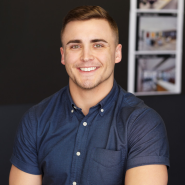Making Space for All
Shaping more positive work experiences for members of the LGBTQ+ community through culture and place
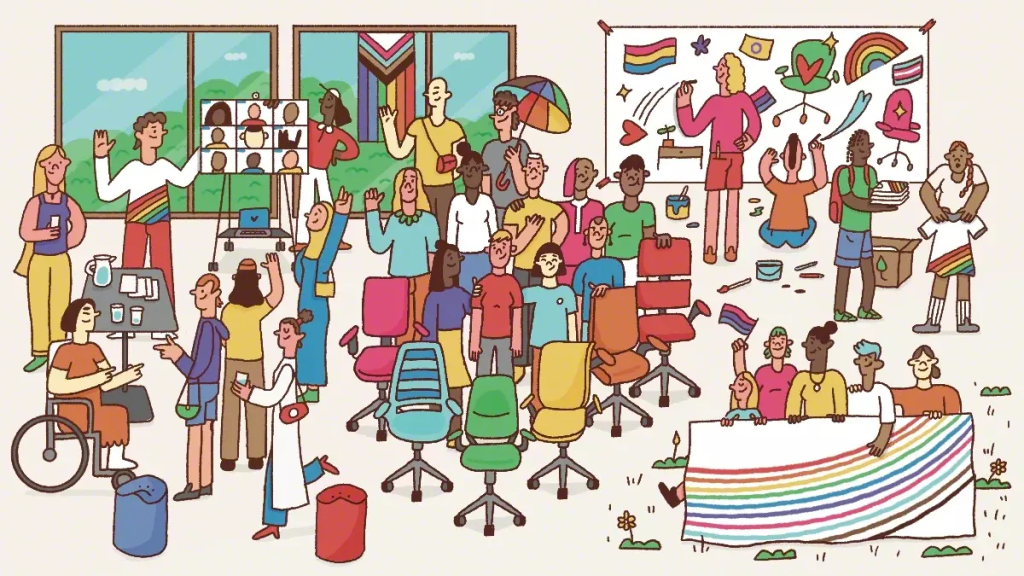
For Melina Sinigos, simple things like going to work can involve a series of calculations – an analysis of whether she can be her authentic self – informed by where, when and even with whom she’s interacting. As a global leader of the Pride business inclusion group at Steelcase, Melina deeply understands the reality she shares with LGBTQ+ co-workers and members of the community at large. It’s a group that routinely experiences a spectrum of inequity – from feelings of invisibility, isolation or exclusion to fears of violence.
“There’s always a sense of silent suffering that goes along with being part of this group, regardless of where you’re located. It’s hard,” Melina says.
While Melina’s team works to build safe spaces through culture, Brooks Morelock, design director for Gensler New York and a member of the LGBTQ+ community, addresses safe spaces via the physical environment.
“I think anytime you’re in a group of any sort of ‘otherness,’ you understand what it feels like to be excluded,” Brooks says of his unique perspective.
“You know what it’s like to not necessarily have a space that’s built with you in mind. Designing for equity means really thinking about a thousand different walks of life, body fit, gender expression, ethnicity, all of those things.”
Brooks MorelockDesign Director, Gensler New York
Melina and Brooks know that in a world where finding both physical and social ‘safe spaces’ can be challenging for members of the LGBTQ+ community, organizations have an opportunity to signal their allyship proudly and proclaim that safe spaces do exist within. However, getting started can often be the biggest hurdle. Steelcase has been on its own journey, along with its partners, to collectively learn and share how to design better cultures and spaces for all.
Designing Spaces for Inclusivity
Having safe places for everybody to do what they need to do, no matter who they are, is a good first step. Starting with an inclusive design mindset and incorporating inclusive design principles can signal an organization is a safe place and an ally. It’s a perspective that requires all voices be heard and included in shaping the built environment.
Flexibility + Choice
To illustrate the broad concept of inclusive design, Brooks uses the example of an auditorium – where all the seats are exactly the same. Designing that same auditorium for inclusivity means giving it flexibility for everyone. That can be accomplished, for instance, by incorporating double seats, armless seats for those with ambulatory needs, office couches, office benches and office seating with different heights and depth. That same mindset can be applied to the workplace. “When you provide choice, you really have to make it hyper inclusive,” Brooks says. “It has to be really considered, so that both the individual and the collective are taken care of.”
Flexibility in space can enhance the opportunity for privacy, choice and control. This is important particularly for members of the LGBTQ+ community, as it allows for the elevation of safety and confidentiality, places for respite and reflection or an area of solitude away from the open office where they can be their authentic selves.
Intentional Shifts
Removing and limiting spaces that define or label gender and identity is an important consideration, but not all organizations are in a position to make major architectural changes. However, there are many smaller, more nuanced changes that are more immediate and just as impactful for members of the LGBTQ+ community.
“Making a couple of really intentional shifts in your language and iconography can mean a lot,” Brooks says. This includes degendering restrooms if possible, and even on gendered bathrooms, removing icons like the traditional woman in a skirt to represent a female bathroom. Another example is the traditional wheelchair icon to represent disability; such iconography can stereotype and be limiting in its suggestion that one experience represents an entire community.
“Those may seem small, but for the folks who have a disability, that is meaningful. You’re doing this for the people who are ‘other’ in some capacity,” Brooks says.
Pride-related art and decor can be another additive to built environments that signal safety and allyship. Displaying art that can be identified with the Pride movement or that is created by an artist who is part of the LGBTQ+ community shows support. Brooks suggests QR codes or small bios near the artwork to identify the artist. And while he doesn’t suggest using Pride colors as central design elements, a small Pride flag somewhere in the environment also demonstrates support.
Creating a Culture of Inclusivity
The workplace shouldn’t be an environment where people feel the need to check their identities or orientations at the door, and people like Melina and groups like the Steelcase Pride inclusion group can help. Pride is a grassroots, employee-led initiative that began at Steelcase in 2017. Within the last year, Steelcase implemented more formal support and structure for employee resource groups, including Pride. That effort includes providing support through executive sponsorship, partnerships with our diversity, equity and inclusion (DEI) team and access to resources and best practices to amplify collective impact through cross-pollination of ideas and learning with other inclusion groups.
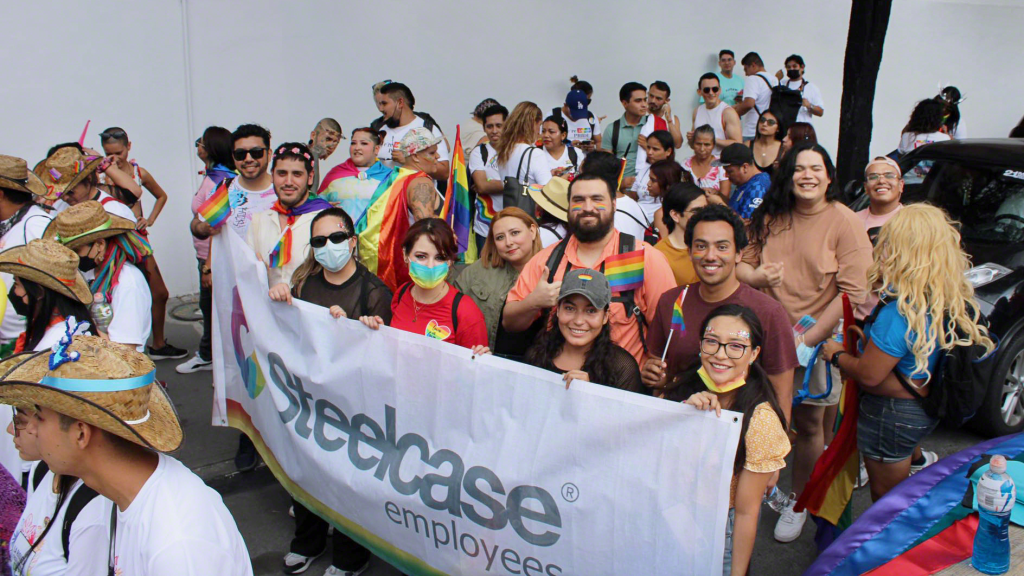
Putting Pride in Action
In strengthening the global Pride team at Steelcase, Melina found success by starting small, and making connections. “One way to get started is by learning about your employees – who they are, what they need, and what they want,” Melina says. She suggests an employee survey to anonymously learn about employee preferences, areas of comfort, feelings of belonging and more. Melina also finds it valuable for organizations to demonstrate their DEI commitments and be explicit about why they’re important. She also believes it’s imperative for leaders to be educated in DEI so they can directly foster a more welcoming and inclusive environment. From there, she suggests working to evolve strong relationships between Pride members, HR and senior leadership to boost advocacy and camaraderie.
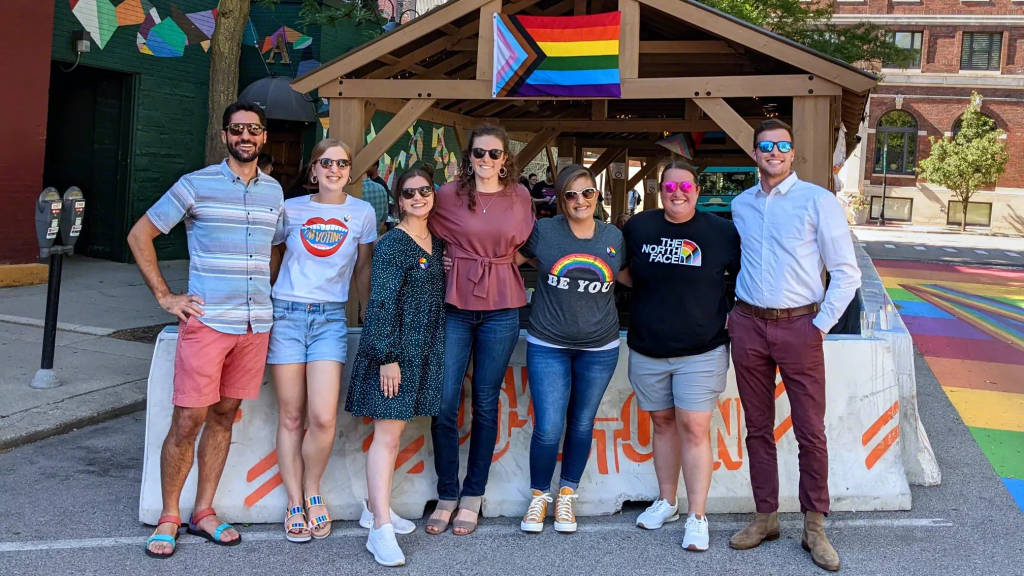
“You can’t just do this as a single employee or a small group. You need backing. You need the support of people who want to help you, support you and make the company better,“ Melina says. “Then you can start asking the right questions and challenging systems and culture – not only within the company, but within your community – and really look at solutions for how to make it better.”
For Steelcase, those kinds of efforts have culminated in a strong Pride group that provides a safe space for members around the world to celebrate their true identities – and much more. Members help educate others in the organization about inclusivity – a foundational aspect of culture change. The group maintains strong partnerships with human resource teams to drive progress forward and connect employees with additional resources. It sponsors and organizes events that signal equity and create a community among coworkers.
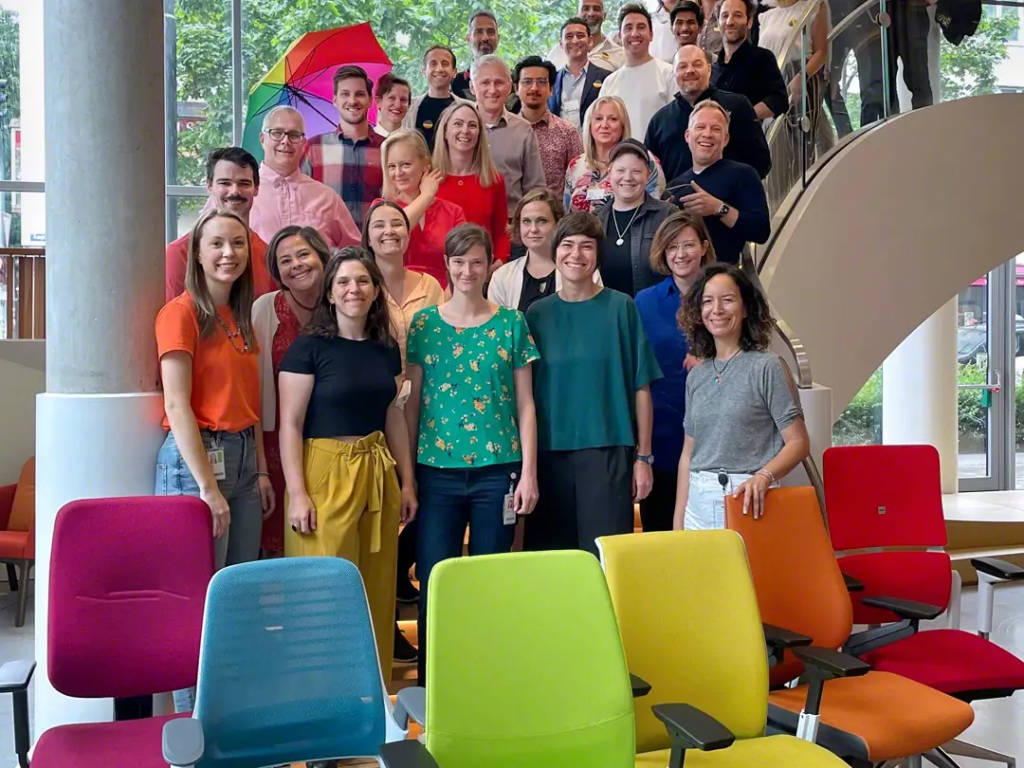
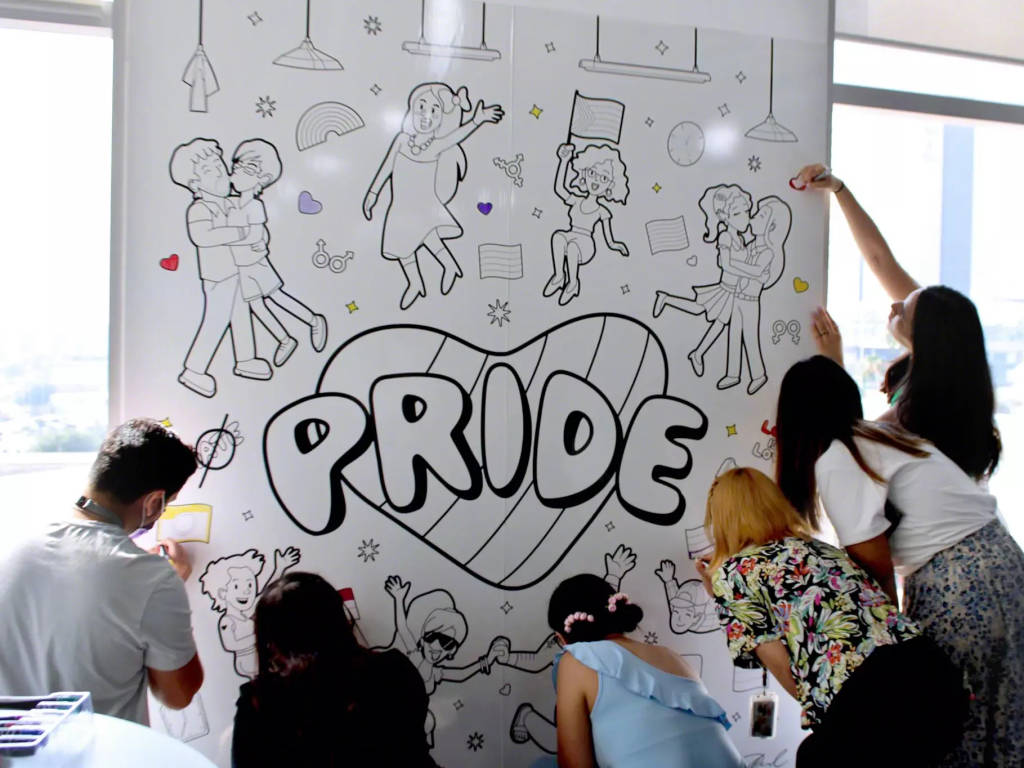
However, Melina believes the Pride group’s most important function is that of a community – a place where people can find people like themselves. For Melina, that’s critical – and personal.
“I want to do something that’s going to help people like me,” Melina says about being a global Pride leader. “I want to help people who are queer like me – or trans, or gay, or anyone else in the community – to know there is representation. There is someone that can help them. There is someone who will listen. There are people and leaders who will support them as an authentic human being – regardless of whatever they think, and whomever they love. Because I didn’t always feel that way, I want all the people who come here to feel they have a voice.”
Melina Sinigos is the MPO Planner for the Steelcase Kentwood Seating and Consolidated Customer Service in Kentwood, Mich. and serves as the Global Business Inclusion Group Leader-Pride. Melina has been with Steelcase since 2019 and has been a member of the Pride core team since she started. She stepped into a leadership role in 2022 and helped lead the opening of the newest Pride core team in the APAC region recently. In 2023, Melina became the global Pride leader, which includes the Mexico, EMEA, USA, and APAC regions.
Brooks Morelock is a design director and senior associate at Gensler. Brooks blends design and strategy to deliver innovative solutions in architecture, interior design, and product design. Brooks was honored by the American Society of Interior Designers (ASID) as 2019 a “Ones to Watch” Scholar, which is a two-year leadership development program for minority leaders in the industry. Currently, Brooks sits on the selection committee for future scholars – providing opportunities to other LGBTQ+ and minority designers. Brooks studied architecture at both the University of Tennessee and Columbia University.
Human Rights Campaign Corporate Equality Index
Steelcase is proud to have received a perfect score on the Human Rights Campaign Corporate Equality Index for the past eight out of nine years. Explore what goes into shaping an inclusive environment for all.
See the Criteria




